When can you dig young potatoes for food?
Summer residents begin to dig potatoes for storage in late August or September. The exact timing is determined by the characteristics of the variety and the weather in the current season. But the harvest of early potatoes can be obtained in the summer. Pre-digging will help ensure that the tubers are large enough. Dug up young potatoes must be cooked and tasted. If the vegetables are watery and tasteless, it is best to keep the tubers in the ground for a while.
Harvesting time depending on the variety
Potato varieties are divided into several groups according to the ripening period. When planting, you need to choose zoned varieties suitable for growing in a specific climatic zone.
Potatoes can be:
- early ripe - you can dig early potatoes in 60 days from the moment of planting;
- medium early - the potatoes are harvested for about 70 days;
- mid-ripening - potatoes need 90 days to ripen;
- medium late - vegetables are ready for harvest in 100 days;
- late ripening - tubers need 110-120 days to ripen.
All varietal groups are suitable for cultivation in central Russia. Planting potatoes in the suburbs and neighboring regions is carried out in the first decade of May, and the harvest is harvested from August 20 to September 15. In cold regions, it makes no sense to plant late-ripening varieties of culture, the potatoes will not have time to fully ripen.
It is possible to dig in early varieties of potatoes on food no earlier than 35 days after planting. For late varieties, the date is shifted 1.5-2 weeks ahead.
Identification of signs of maturity
You should not focus only on planting dates and characteristics of the potato variety.
The ripening process of tubers is additionally influenced by 5 factors:
- Soil fertility. The poorer the soil, the faster the potatoes ripen in it. However, the amount of harvest in the lean land will be much less.
- Soil structure. Small and deformed tubers form in dense soil. The soil for planting potatoes should be loose.
- Watering mode. In overdried soil, potatoes ripen at an accelerated pace, but the tubers themselves will be small.
- Fertilization. A reasonable balance must be struck in this matter. Excessive feeding will cause rapid growth of the aerial part to the detriment of the formation of tubers. If the plantings are not fertilized, the harvest is unlikely to please.
- Air temperature. Stems and leaves grow best at a temperature of 16-22 ° C, tubers need an indicator of 10-13 ° C for normal development.
Seedlings appear 15-20 days after planting. Potatoes bloom in another 2-3 weeks. Flowering times may be delayed if planted in cool weather. At low temperatures, potatoes do not germinate immediately. When the potatoes have bloomed, the process of forming tubers begins underground.
After flowering, round berries with seeds appear on the bushes. Seed material can be used for propagation. You can dig the first potatoes for the table 2 weeks after the potatoes have faded. For a test, they dig 2-3 bushes at different ends of the site and examine the tubers.
The skin on the potatoes during this period will be still thin, attention should be paid primarily to the size. The bulk of the tubers should have a diameter of at least 5 cm. If the potatoes are slightly larger than peas, you will have to postpone the digging for another 1.5-2 weeks. The fastest growing culture ripens in the summer heat and drought.
Signs of final maturity can be seen in the appearance of the plants and soil around the bushes:
- the tops turn yellow and become lethargic;
- the skin on the extracted tubers becomes coarse, its condition can be checked by rubbing the potato with your finger with effort;
- the soil near the plants cracks and rises.
Additionally, you can check the potatoes for starch content, which is enough in ripe tubers. The potato is cut in half and a few drops of iodine are dripped onto the cut. If the color of the vegetable becomes pale purple, the potatoes can be harvested for long-term storage.
Harvesting early potatoes
Harvesting early potatoes is carried out while the tops are still green, and the tubers are covered with a delicate thin skin. Previously, the above-ground part is mown. It is better to pick young tubers from the ground by hand so as not to accidentally damage them.
You can get vegetables for food during the flowering period. For this purpose, the most developed plants are selected. Next to the bush, they dig a hole and feel the tubers with their hand. The largest of them are plucked in order to be used as food, and the small ones are left to grow further. After that, the hole is again covered with earth. At the same time, you can make top dressing in the form of wood ash.
After that, the plants are spud and watered. If done correctly, the potatoes will continue to develop and no signs of wilting will appear on the tops. Since young potatoes cannot be stored for a long time, they are not harvested at the same time, but dug out as needed in the right amount.
Part of the crop can be set aside for later planting. For this purpose, tubers are selected from the most developed and healthy bushes. The planting material should be of the correct shape, without mechanical damage, of medium size. It is impossible to overexpose early potato varieties in the ground, otherwise their commercial qualities will decrease, moreover, vegetables may be damaged by late blight.
Early potatoes are finished harvesting in July. In the southern regions, you can plant potatoes in the same place again, it will have time to ripen before autumn. For planting, use the tops left from the crop. Work is best done on a cloudy day. Potato stalks are buried in the ground and watered well. Summer residents of the middle lane, after removing potatoes from the garden, can sow radishes, lettuce, herbs, and onions on a feather after it.
Harvesting late potatoes
Harvesting late potatoes in temperate climates should be done before September 20. Failure to increase the timing can lead to cracking of tubers and their early germination in the future. And the sudden frost can ruin the harvest. They start cleaning at an air temperature not higher than 17 ° C and not lower than 10 ° C. Cold will cause blackening of the tubers.
A dry, clear day is chosen for cleaning. Work is best done in the daytime, the air is too cold in the morning. Experts recommend mowing potato tops a week before harvesting - this agricultural technique will help thicken the skin and protect tubers from various infections.
This should be done in the event that the harvesting time has come, and the tops remain green and are not going to wither. Mowing the stems is also carried out when the culture is suddenly struck by late blight. Potatoes left in the ground can be stored for up to 3 weeks without loss of quality. During this time, the tubers will be able to finally ripen.
In personal subsidiary plots, the method of cleaning can be different. Summer residents can use a pitchfork, a shovel, use a walk-behind tractor. After harvesting, the tubers are not removed from the garden, but left to dry for 3-4 hours. On a sunny day, the potatoes will at the same time be treated with ultraviolet light, which will contribute to their better storage.
Harvest preparation for storage
After harvesting, tubers are sorted by size and variety. It is better to immediately lay out the potatoes in separate boxes:
- Part of the crop is separated for further planting.The seed tubers should have a weight of 60-80 g and a flat surface without spots.
- Small vegetables are used for livestock feed.
- Damaged potatoes are selected for priority cooking.
- Large potatoes should be stored for long-term storage.
- Diseased tubers are disposed of outside the site so that pathogenic bacteria and viruses do not pose a threat to other cultivated plants.
The crop intended for storage is treated with a biological antifungal agent ("Bactofit", "Fitosporin"). Then the potatoes are transferred under a shed or in a well-ventilated shed, where the tubers are laid out in a thin layer for final drying. A few days later, the potatoes are placed in containers (nets, boxes, bags) and placed in storage.
Vegetables are best stored in a cellar or basement at 2-4 ° C. If a glazed balcony is used as a storage, the potatoes are placed there in a box with insulated walls and a bottom. In severe frost, the box is additionally covered with an old blanket or other insulation.
Once a month, vegetables are sorted out, removing spoiled potatoes from storage. Diseased and rotten vegetables can quickly infect nearby tubers. Planting potatoes are stored under the same conditions. For reliability, it can be treated with chemical fungicides, because it will not be used for cooking anyway.
The timing of harvesting potatoes is best observed in any case. With the early extraction of tubers, summer residents receive less harvest. Overexposure of potatoes in the ground threatens with loss of taste, cracking, damage due to frost. Young potatoes are removed as needed, digging in the bushes 2 weeks after flowering.
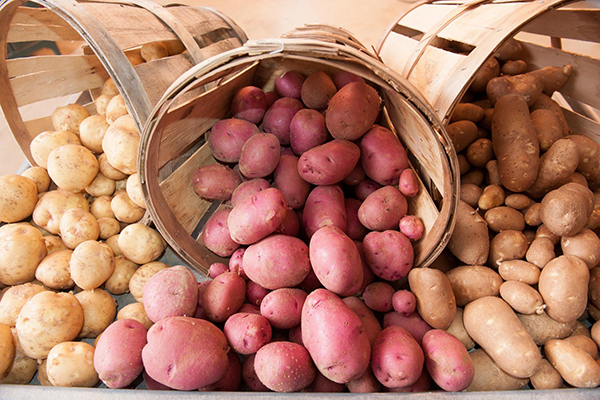
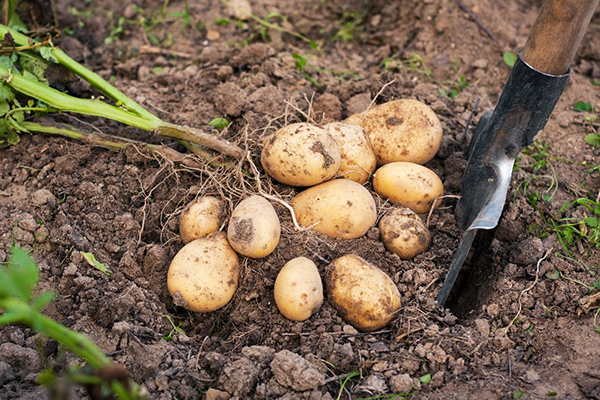
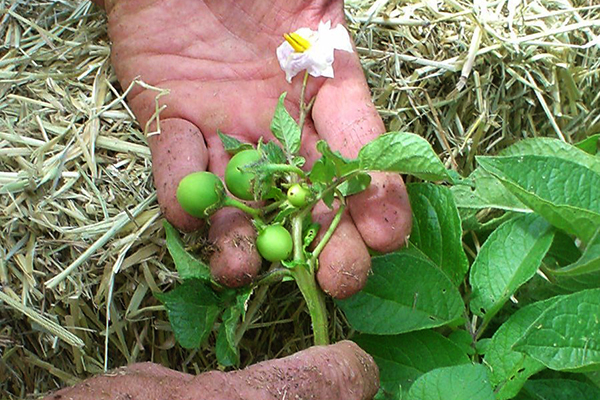
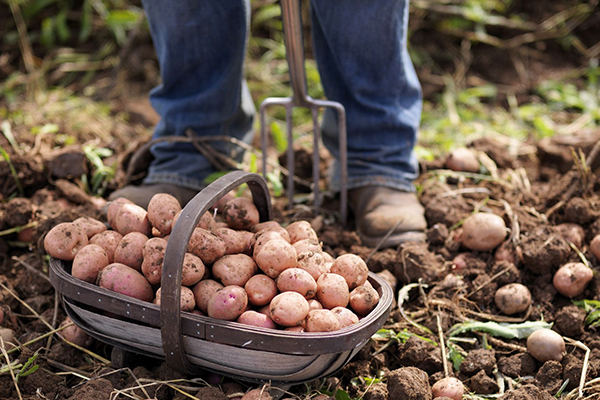
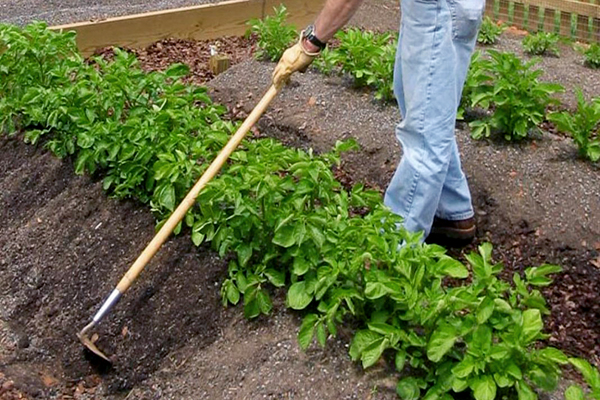
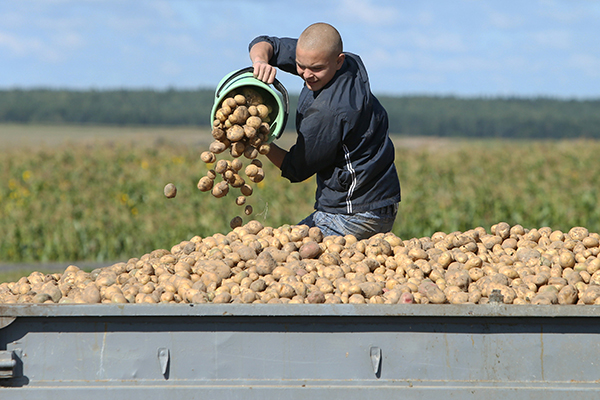
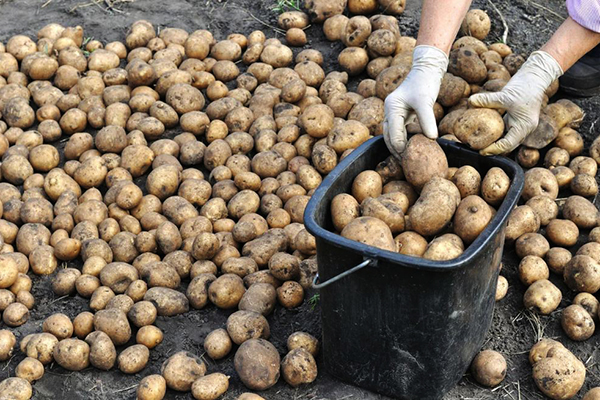
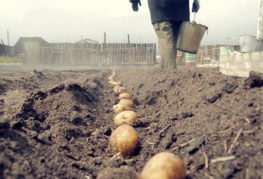
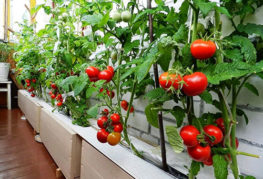
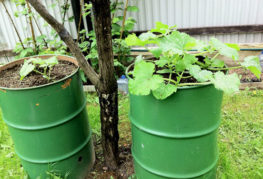
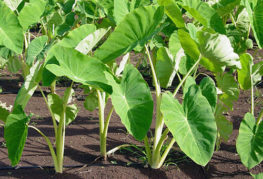


and will be published shortly.